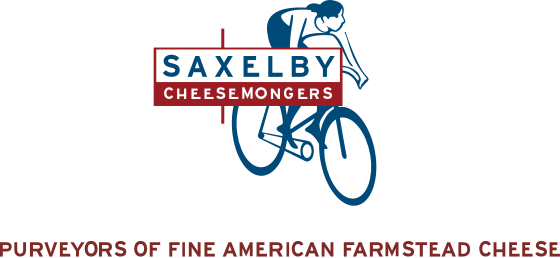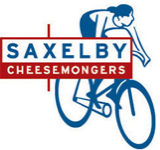Cheese and wine are two of the most delicious things on the planet. It’s no wonder they pair so harmoniously together - wine and cheese share many common roots when it comes to their production (we could write an entire book on that!) but the tie that binds them most closely is fermentation. Through the magic of fermentation milk becomes cheese and grape juice becomes wine. The American author Clifton Fadiman famously wrote that cheese is ‘milk’s leap toward immortality’; it follows that the microbes responsible for fermentation are the divine beings that form the springboard.
Pairing these two incredible foods need not inspire wailing and gnashing of teeth, rather with a few simple and unpretentious guiding principles, you can create memorable and beautiful wine and cheese pairings for any occasion!
We spoke with our good friend Brandon Borcoman, sommelier and proprietor of vin-decision, a New York based virtual (and IRL) wine tasting business to get some expert tips on the art of pairing wine and cheese. Like any good relationship, Brandon counsels that first and foremost ‘the wine and the cheese must understand each other.’
The Best Pairing is the One YOU Like Best
This cannot be overstated! Do not be intimidated by the legions of wine and cheese geeks out there (yes we count ourselves among the geeks, but try to not be intimidating!) into thinking that your own taste buds aren’t your best guides to pairing nirvana. Everyone in the world perceives flavor differently, so your favorite pairing might be, nay should be, different than your friend’s, spouse’s, or neighbor’s. When you have a spread of wine and cheese, mix and match and see what pairings speak to you! There are no wrong answers.
What Grows Together Goes Together
When it comes to European wine and cheese pairings, the wines and cheeses of different regions have co-evolved over centuries and almost without fail go together. For example, crisp acidic white wines and lighter, earthier reds from the Loire Valley pair perfectly with the bright, lactic young goat’s milk cheeses of the region. Beautifully balanced red wines from Burgundy go hand in hand with creamy, pungent cheeses like Epoisses, and nutty, slightly oxidized whites from the Jura are a winning match for long aged cow’s milk cheeses like Comté.
In America, we don’t have the same longstanding traditions of regional food production (though we’re getting closer with each passing year’s proliferation of local wine, craft beer, cheese, and charcuterie production!) so we can look to our European counterparts for inspiration. If you’re drinking a Sauvignon Blanc (a grape commonly grown in the Loire) you might look to a bright, tangy goat cheese like Cremont. If you’re drinking a Pinot Noir (the keynote grape in Burgundy) you might go for a pungent, washed cheese like Grayson or Oma.
Think About Texture
When we’re pairing cheese and wine, of course we’re thinking about flavor, but we’re also paying close attention to texture. The weight and body of different cheeses and wines can vary dramatically, and when you can align the texture of a wine and a cheese, some pretty cool things can happen.
Brandon likes to illustrate this point in the medium of dairy by contrasting skim milk and cream. Skim milk is, well, boring. It’s very light and watery, while cream is dense, rich, and wonderful. In fact, for our purposes let’s skip the skim entirely and make the analogy between 2% milk and cream. 2% milk is pleasant, sweet, and not overly heavy. Whole milk takes it up a notch in terms of richness and fullness. Cream is over the top decadence.
The same goes for wine, though let’s be honest… nobody would drink a ‘skim’ wine. (In fact, those low carb beers might be the closest alcohol equivalent to skim milk). However, lighter bodied wines understand lighter bodied cheeses, and more full bodied wines demand a richer, more complex cheese as a dance partner.
Light, fresh, creamy cheeses like bloomy rinds tend to pair better with crisp, lighter wines (think white wines, rosés, and lighter reds like Gamay and Beaujolais). Bolder white wines like oak-aged Chardonnays and medium bodied red wines like Pinot Noir are game to play with a wider range of cheeses, from slightly funky washed rinds to cheddars to aged Alpine-style cheeses. Sheep’s milk cheeses, because of their elevated amounts of butterfat (fun fact: sheep’s milk has about twice as much butterfat as goat or cow’s milk) are ideal partners for red wines, especially bolder reds like Cabernet Sauvignon, Bordeaux or Barolo.
Keep It Polite, Or Don’t...
Great wines like the best French Chardonnays, Burgundy, and Barolo are balanced, poised, and complex. Their understated elegance is their greatest attribute, and consequently they yearn to be paired with polite cheeses, i.e. cheeses that are themselves balanced and elegant - rich, clean, triple cream cheeses like Kunik, refined aged Alpine-style cheeses like Calderwood, and rich, nutty sheep’s milk cheeses like Verano all come to mind.
On the other hand, funky wines are having a moment. Natural wines and orange wines are popular on wine lists and at wine shops, and have the ability to pair delightfully with many cheeses. But the funk of the cheese must match the funk of the wine, lest one of them trundle over the other. For example, an aged Riesling with musty, earthy, smoky flavors would be a perfect match for a mushroomy blue cheese, or a tart, fruity, ferment-y orange wine wants an equally funky cheese - something like Afterglow, a goat’s milk cheese washed in fruit beer, to bring the funk to dizzying new heights!
White Wine Is Easier to Pair with Cheese Than Red Wine
This one probably flies in the face of everything you’ve heard about wine and cheese pairings, but it’s true! Because red wines can be SO bold, so tannic, so structured, and so rich, they can be very difficult to pair with cheese. As Brandon says, red wines are rarely shape shifters. White wines, on the other hand, are more versatile and can play the role of chameleon when it comes to cheese (and other foods too) to match their temperament to the dish they’re served with.

Follow the Rainbow
When you’re pairing wine with a selection of cheeses, or with a meal, it’s best to start with lighter flavors and progress towards stronger ones. Ideally, you can lead off a tasting with white wine(s) and/or rosés, progress to red wine(s) and conclude with sweeter dessert wine(s) that are white or red. The salt in cheese and the residual sugars in dessert wines like Port or Sauternes make them stunning companions.

